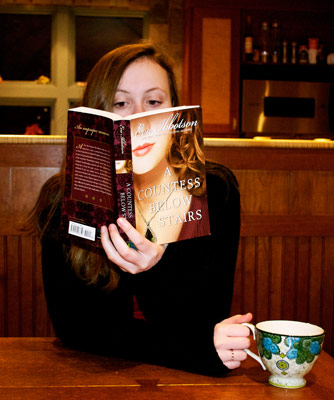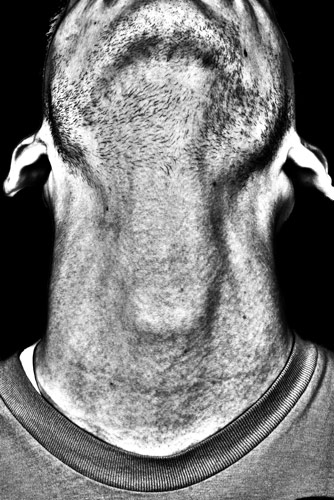
Gallery Photographers
Partner
Artists-in-Residence
Image City Feature Articles
Gary's Photographic Tips
Newsletter Archive
If you are unable to visit our gallery and would like to purchase photographs from this preview or others in the gallery, please contact the gallery and call 585-271-2540.
Bruno's Critiques
Through the Student Lens
March 21 - April 15, 2012
Bruno Chalifour, noted photographer, photography critic and historian has selected his favorite photographs from the show. He is sharing his analysis and comments.
click here to return to the details of the exhibit
All images copyright by the individual photographers. Critiques copyright by Bruno Chalifour, 2012
Into a Good Book by Nathalie Lichstenstein Alice in Wonderland? Doesn’t this young reader entertain a definite resemblance with Mona Lisa? Add to her added smile the general warm tone of the photograph and the only missing link is a Tuscan landscape in the background. Enigmatic in a sense, lightly-humored tension, the surreal quality of the real juxtaposition face/cover of the book make us take pause here too. No utterly distracting elements, although… (see below). In all, a very successful pseudo-collage. Technically though a few elements could be improved: the light of the hands is a little too bright and cold/blue. Printing them a little darker and a little warmer would blend them more into the atmosphere of the photograph. The cup in the bottom right corner of the image is definitely an interesting contextual element but the way it is lit and printed makes it too strong a statement for a perfectly successful image: too much light, too much contrast, cooler and more saturated colors than the rest of the image. Suggested viewings: Parke-Harrison, Jerry Uelsmann, Man Ray, Joel-Peter Witkin, Abelardo Morell, Gregory Crewdson, Duane Michals… © Bruno Chalifour, 2012 Aaron by Emily McDowell Emily McDowell succeeded in creating a strong photograph using strong compositional lines, including quasi symmetry, high contrast and strong texture. Through the use of an unusual vantage point/angle of view, she managed to show us another side of reality, a more mysterious and graphic version of it. She created the successful tension of her photograph thanks to its above-mentioned characteristics but also because she suspended the processes of our minds for a fraction of a second or more. At first the subject of her photograph does not look like anything we know, but in fact it does not look like something we know, the way we usually see it. That neck becomes an almost gritty if not threatening abstraction. Here again, we take pause. We think and we appreciate the vision, work done and the aesthetics achieved. It took the invention of photography, for us to see such images. Never before the invention of the medium had a visual artist represented the world, the human body, and here a neck in that particularly manner. Never before the Russian avant-garde and photographers like Rodchenko, and then cinematographers like Vertov, had our vision been so “new.” A new objectivity. Interestingly, Emily’s particular image also evokes the 1960s and 1970s, and a specific trend for gritty, grainy, high-contrast black and white photography. Bill Brandt, William Klein, Mario Giacomelli, and many others come to mind… Emily’s work is deeply anchored in a long photographic tradition, one that believed in the power of the photograph to reveal another facet of the world to us, one to which we had not had access so far. Not far from surrealism, modernist at heart for sure. This faith in the power of imagination, vision, the novelty of approach generated by new tools, new technologies is empowering and refreshing. Here again the choice of the tools–high contrast, black and white accentuating abstraction and textures–appears to be in perfect accord with the pursued goal. Content and form united. Suggested viewings: Bill Brandt, Anders Petersen, John Coplans, Richard Avedon, Mario Giacomelli… Keuka As in Bill Brandt’s work this particular image displays a key element, tension. Tension is what makes us, the viewers, take pause, scrutinize, spend more time in front of the photograph, and ultimately remember it. The power of this particular example of tension lies in the tranquility, the silence, the subtlety with which it is expressed in terms of lines, light, and density (light and density=subtle play with contrast and tone as seen in this photograph). All these components are the key ingredients of a genuine photographic vision. Going further the photographer used a clever and subtle photographic process: blurred zones, the usual result of controlled depth of field, in front of and beyond the subject, isolating it, truly focusing and making us focus on the main subject whose sharp lines stand even stronger even when curved. Whether created by a very open aperture at the moment of capture, or generated or enhanced in post-production by an image-processing software, this use of soft (out-of-focus/blurred) areas is extremely successful in its participation in the atmosphere of the photograph – I say photograph here as I doubt that the moment looked as magical as the photograph is. There was something in the air, the photographer felt it, her work as well as eye, mind and heart, did the rest. The framing/composition excluded all distracting elements, all factors that would have surely dissolved the atmosphere of the photograph into a trite snapshot of 2 boats on a lake. Last but not least an excellent, because sensitive while sensible, printing technique gave birth to this successful image. Suggested viewings: Bill Brandt, Michael Kenna, Keith Carter, Carmelo Bongiorno, Richard Misrach. © Bruno Chalifour, 2012 
Allendale Columbia
Collage, vantage point, tongue-in-cheek tone, surreal situation.
Leonardo da Vinci collaborating with the Monty Python? 
Brighton
by Clara Riedlinger
Pittsford Sutherland
The most obvious quality of this photograph by Clara Riedlinger is one that Bill Brandt, the most renowned British photographer of the 20th century, called “atmosphere.” In order to achieve such a result the photographer, especially when/if the image imposed itself to her while she was looking at the real scene, needs vision, what another famous photographer, Henri Cartier-Bresson, summarized as the meeting of the eye, the mind, and the heart.
Image City Photography Gallery ♦ 722 University Avenue ♦ Rochester, NY 14607 ♦ 585.271.2540
In the heart of ARTWalk in the Neighborhood of the Arts